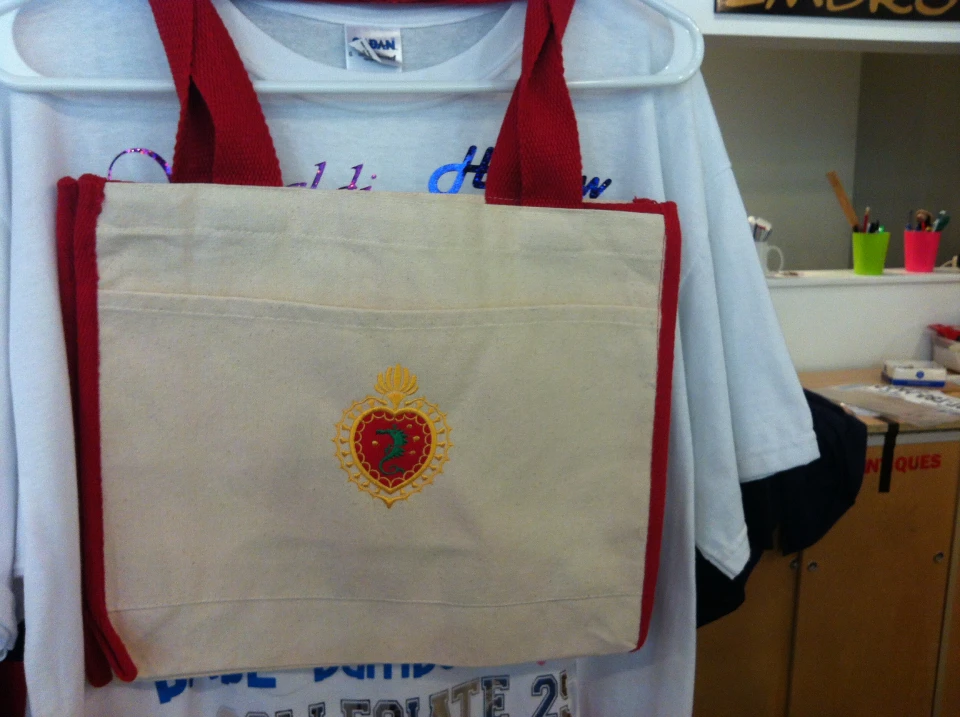Stitched Sports Teams Names and Numbers - Specialist and Long lasting
Stitched Sports Teams Names and Numbers - Specialist and Long lasting
Blog Article
The Art of Personalized Needlework: Opening the Secrets to Creating Unique and Memorable Styles
Needlework, a craft steeped in custom and virtuosity, holds within its intricate stitches the power to change textile into a canvas of distinct expression. The keys to creating customized needlework layouts that astound the eye and leave a long lasting impression lie in a fragile equilibrium of strategy, creativity, and interest to information. As we look into the world of customized needlework, we reveal the nuanced interaction in between thread choice, sew complexity, and design personalization that raises a plain garment to an artwork. Join us on a journey via the art of custom embroidery as we untangle the enigmas behind crafting really extraordinary and unique productions.
Picking the Right Needlework Threads
When choosing embroidery strings, what essential factors should you consider to ensure the very best results for your personalized styles? The selection of needlework thread is critical in figuring out the final result of your embroidered layout. One of the key considerations is the product of the thread. Various materials such as cotton, polyester, rayon, and silk supply varying degrees of shine, durability, and appearance. It is vital to pick a thread product that complements the textile you are embroidering on and aligns with the wanted appearance of the design.
Thicker strings can include measurement and appearance to your layout, while finer strings are ideal for elaborate details and small text. Furthermore, thinking about the color fastness and washability of the thread is important to make sure that your custom-made layouts keep their top quality and vibrancy over time.
Discovering Various Stitch Methods
To explore the world of 'Exploring Various Stitch Techniques', one need to understand the details and subtleties that each sewing method brings to the art of needlework. Different stitch techniques not just add aesthetic interest but likewise add to the overall texture and dimension of the layout. One prominent stitch strategy is the satin stitch, which involves very closely jam-packed parallel stitches to produce a smooth and glossy surface area, ideal for filling out forms and producing strong outlines.
On the other hand, the backstitch is a flexible method commonly made use of for laying out and including fine details. It entails sewing backward to develop a strong line of needlework. Furthermore, the French knot stitch adds a responsive element to layouts, perfect for producing distinctive accents like blossom centers or attractive touches.
Exploring various stitch techniques allows embroiderers to play with light, shadow, and depth within their designs, boosting the visual allure and artistic high quality of their embroidery tasks. By grasping various sewing methods, one can open limitless opportunities for producing unique and remarkable personalized embroidery pieces.
Incorporating Personalized Layout Components
Having explored the ins and outs of different stitch methods such as the satin stitch, backstitch, and French knot, the focus now changes in the direction of including personalized design elements in personalized embroidery jobs. Individualized layout elements play a vital duty in making needlework projects really special and remarkable.
An additional means to incorporate customized style aspects is by consisting of signs or themes that hold unique definition to the recipient or mirror their passions and individuality. For example, incorporating a favorite flower, animal, or hobby-related symbol can make the embroidery design more meaningful and personalized. Furthermore, selecting colors that reverberate with the recipient or straighten with the designated theme can further enhance the customization of the needlework project.
Mastering the Art of Color Control
One trick facet of shade coordination is comprehending shade concept. This includes recognizing just how different colors engage with each other, the feelings they share, and how they can be incorporated to develop visually appealing styles. By using color theory principles, embroiderers can develop unified color combinations that improve the overall look of the style.
Furthermore, paying attention to contrast is critical in color control. Utilizing contrasting colors can help particular aspects of the layout pop, enhance legibility, and create an aesthetically you can try here vibrant embroidery item. By mastering the art of shade sychronisation, embroiderers can elevate their styles and develop unforgettable pieces that reverberate with customers and customers alike.
Enhancing Texture With Advanced Needlework Stitches

French knots, for example, are best for including little, raised dots to your design, simulating the appearance of beads or producing a distinctive surface area. Bullion knots, on the other hand, can be made use of to create twisted, ropelike components that include a glamorous feeling to the embroidery. Seed stitching includes little, scattered stitches that can complete areas with a polychromatic texture, while turkey job creates fluffy, dimensional accents evocative pet fur or foliage. view it now Exploring with these advanced embroidery stitches enables you to push the limits of traditional embroidery and produce genuinely special and aesthetically appealing appearances in your layouts.
Conclusion
Finally, the art of custom embroidery entails a combination of picking the right strings, discovering various stitch techniques, incorporating customized design components, grasping color coordination, and enhancing appearance with innovative stitches. By comprehending and carrying out these crucial elements, embroiderers can produce special and remarkable layouts that display their creativity and skill. Embroidery fanatics can unlock the tricks to developing beautiful and bespoke pieces that stick out and leave a long lasting impact.
Report this page